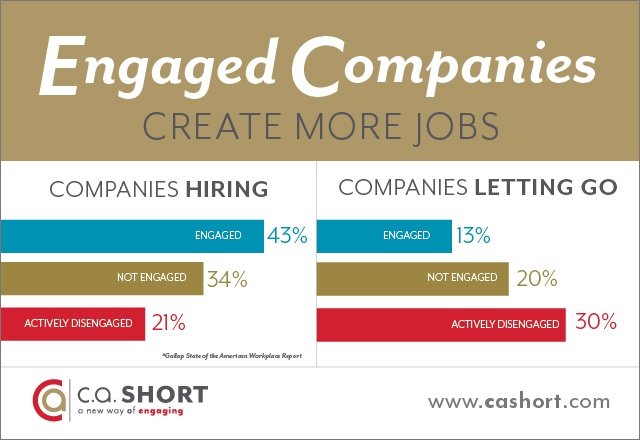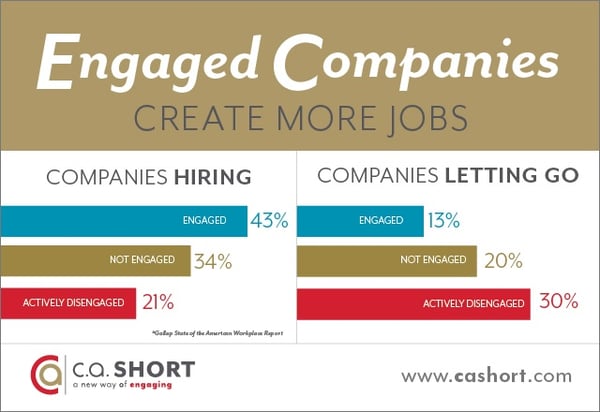At the conclusion of our last great recession, economists widely agreed the U.S. needed to create more jobs in order to sustain the country’s fragile economic recovery. So, how does an organization effectively create new jobs while striving to rebuild their profit margins and market share?
The answer is through SafegagementTM. Safegagement occurs when employees are fully engaged at work and, as a result, are safer and make better decisions that benefit the entire organization. A recent “State of the American Workplace” report from Gallup found employers with an engaged workforce were twice as likely to report their company was in the process of hiring new team members.
Employee Engagement as a Catalyst
How does this happen? Well, further into the report researchers came to surmise that while job creation may be a partial byproduct of the economic climate as a whole, it’s also likely a function of a business’ individual success, as factored by its environment, performance and leadership. Effectively, the way leaders manage their teams creates tangible results on overall engagement levels and in turn, the company’s bottom line. The more workers are engaged and believe in the organization, the higher their levels of productivity and financial outcomes.
So, while it’s good news that an engaged workforce can boost the economy, the unfortunate news rests in the fact that a mere 13% of employees—worldwide—are engaged in their jobs. And just what qualifies as engagement? It’s simply defined as those who are emotionally invested in and committed to the work they do. These are individuals who make positive contributions to the organization and ultimately help in attracting and retaining new customers and higher levels of talent; drive innovation at multiple levels; and create a positive work environment for fellow co-workers.
The Role Employees Play
As Sangeeta Agrawal, Gallup Workplace Research Manager, stated, "It goes in circles: When people are more engaged, their companies do better, and those companies have room to add more people. When employees are not engaged or are actively disengaged, their companies don't do as well, so they don't hire new workers, and they may even lay off the workers they have. Yet, when the ratio between engaged employees and actively disengaged employees improves, the whole company improves. That, in turn, can improve whole economies."
Another key difference to keep in mind when it comes to engaged employees is nine out of 10 agree hard work is an essential part of their individual success. That’s why these team members are more likely to work later and more efficiently, proactively address issues, and offer innovative ideas to streamline processes and further grow the business. Simply put, engaged employees spread enthusiasm, which fuels the economy at every level of a company, be it mental, emotional or physical.
What Employers and Leaders Can Do
So, as an employee or leader, the best medicine you can prescribe for your ailing business is enacting a plan to actively engage team members at every level. Be transparent and provide an opportunity for each employee to better understand the goals of the brand and why every team member is important. Your efforts will elevate those in desperate need of engagement to perform better while the additional support given to already enthusiastic employees will reinforce your commitment to theirs as well as the business' future success.
At C.A. Short Company, we are your partner for increased employee engagement resulting in increased performance outcomes to grow your bottom line. Our process and research-based platform helps you engage your team in order to increase your bottom line, motivate your staff to the benefit of the entire organization, and reward your people for the positive changes they make. To request a Complimentary Consultation, please click here.







.jpg)



SHARE